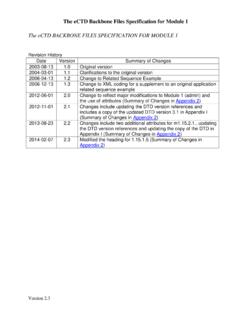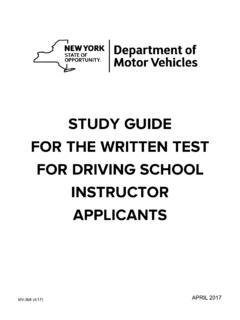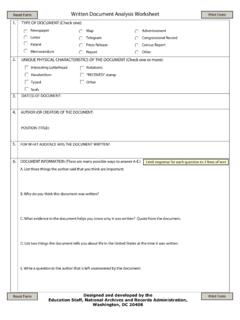Transcription of Pharma Change Control - FDAnews
1 Pharma Change Control Strategies for Successful Company-Wide ImplementationThe Executive Briefing SeriesFrom the Editors ofCopyright 2013 by Washington Business Information Inc. All rights reserved. The Executive Briefing Series from The Food & Drug Letter (ISSN 0362-6466), is an in-depth analysis of regulations and issues affecting the pharmaceutical and biologics industries. The series is published monthly, 12 issues per year, for $4,995. Photocopying or reproducing in any form, includ- ing electronic or facsimile transmission, scanning or electronic storage is a violation of federal copyright law and is strictly prohibited without the publisher s express written permission.
2 Subscribers registered with the Copyright Clearance Center (CCC) may reproduce articles for internal use only. For more information, contact CCC at or call (978) 750-8400. For site licenses for multiple users or to purchase multiple copies, contact Nelly Valentin at (703) Change Control :Strategies for Successful Company-Wide ImplementationTable of ContentsAbout the AuthorsPrinciples of Change Control ..3 Introduction and Operation of Change Control Programs ..6 Parallel Programs ..7 Company-Wide Programs.
3 7 Grading the Changes ..8 Trials ..10 Deviations ..10 Change Control Committee ..10 Documentation ..12 Change Requests ..12 Appendices ..21A. CMS Change Control Management Plan Version Change Management Plan Version EMA Questions and Answers on Post Approval Change Management ProtocolsAbout the AuthorsDr. Michael Hiob has worked for the State of Schleswig-Holstein (Germany) in Drug Control since 1991 as Head of the Laboratory for Drug Analysis and later as GMP Inspector for the Regional Authori-ties for Health and Occupational Safety of the State of Schleswig Since 2006 he has been working with the Ministry for Social Affairs, Health, Family, Youth and Senior Citizens as supervising surveillance member of the expert group on Qualification/Validation.
4 He is also active in international committees, including as expert for the FMEA and the International Conference on Harmonization (ICH).Thomas L. Peither is a GMP consultant for 18 years and an expert in the European GMPs. He co-founded the GMP publishing company Maas & Peither (Germany, USA) and the midsize Pharma con-sulting company Halfmann Goetsch Peither (Switzerland, Germany, Singapore), which advises numer-ous pharmaceutical Change Control : Strategies for Successful Company-Wide Implementation 3 Principles of Change ControlAs a rule, before a company can manufacture a drug, it must first gain approval from the appropriate federal agency to make sure it meets quality, efficacy and safety in order to follow Good Manufacturing Practices (GMP), manufacturers must comply with nu-merous requirements.
5 Firms must document instructions for manufacture and quality Control procedures. They must specify materials needed and define the basic conditions required for a reproducible quality, such as suitable rooms, qualified facilities, trained personnel and type of documentation (See Figure 1).Before a company can implement these requirements, it needs a regulatory body to review their suit-ability for the intended purpose. In the theoretical approval model, regulatory authorities carry out the review as part of an authorization procedure.
6 If approved, applicants receive a notice that the product is suitable and authorized for use. Pharmaceutical manufacturing companies must prove the suitability of apparatus/facilities and procedures with qualification/validation. In these cases, someone responsible must sign the qualification/validation report confirming suitability and authorization for principle that companies must adhere to suitable requirements is not only valid the first time a drug is manufactured or the first time a facility follows a procedure.
7 They must follow and adhere to these requirements throughout the whole history of a drug or as firms must document the entire batch history, they must also document requirements, such as written specifications for materials or directions for procedures. Firms must also document each Change Control for the a result of scientific/technical development, changes to the legal basic conditions, or business re-straints, manufacturers typically have to redefine, modify, enhance, or cancel requirements again and again in practice.
8 In turn, this Change to previously approved requirements requires a review and authorization procedure to keep the system in its original state of proven suitability. This is the task of the Change roomsQualified facilitiesValidated proceduresTrained personnelSpecificationsWritten instructions Defined responsibilitiesSufficient resourcesBased on:Reproduced with:Approved theoretical modelPrerequisites for a guaranteed medicinal product qualityFigure 1: Change Control Area of ConsiderationPharma Change Control : Strategies for Successful Company-Wide Implementation 4 Change Control programs are considered essential elements of pharmaceutical quality assurance sys-tems.
9 The glossary to Annex 15 of the EU GMP Guidelines defines Change Control as: A formal system by which qualified representatives of appropriate disciplines review proposed or actual changes that might affect the validated status of facilities, systems, equipment or processes. The intent is to determine the need for action that would ensure and document that the system is maintained in a validated state. Chapter of the EU GMP Guidelines says this about the handling of changes: Significant amendments to the manufacturing process, including any Change in equipment or materials, which may affect product quality and/or the reproducibility of the process should be validated.
10 There are also two brief notes in the Code of Federal Regulations (CFR) on the topic of Change Control (21 CFR, and 21 CFR, ): written procedures; deviations.(a) There shall be written procedures for production and process Control designed to assure that the drug products have the identity, strength, quality, and purity they pur-port or are represented to possess. Such procedures shall include all requirements in this subpart. These written procedures, including any changes, shall be drafted, reviewed, and approved by the appropriate organizational units and reviewed and approved by the quality Control unit.













